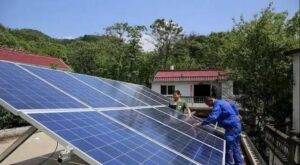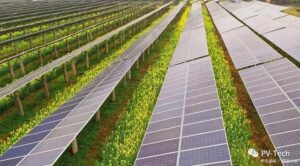A PV module is usually rated at 1 kW/m2 at 25 ° C. However, when operating on site, they usually operate at higher temperatures and slightly lower sunshine conditions. In order to determine the power output of solar cells, the expected operating temperature of solar panels must be determined. The nominal operating cell temperature (NOCT) is defined as the temperature reached by the open circuit solar cells in the solar panel under the following conditions.
Irradiance of battery surface=800 W/m2
Air temperature=20 ° C
Wind speed=1 m/s
Mounting=open back

The equations of solar radiation and temperature difference between solar panels and air show that, at a given wind speed, the conduction and convection losses are linearly related to the incident sunlight, provided that the thermal resistance and heat transfer coefficient are not strong with temperature changes. NOCT of the best case, worst case and average PV modules. In the best case, the aluminum fin at the rear of the module is used for cooling, reducing the thermal resistance and increasing the surface area of convection.
The best solar charging panels operate at 33 ° C NOCT, the worst solar PV modules operate at 58 ° C, and typical solar panels operate at 48 ° C. An approximate expression for calculating the cell temperature is:
Battery temperature=air temperature+(NOCT-20)/80 * S, where S=sunshine, in mW/cm2. When the wind speed is high, the temperature of the solar PV module will be lower than this value, but it will be higher in the static state.
Influence of Solar Module Design on NOCT
Solar module design, including solar panel materials and packaging density, can have a significant impact on NOCT. For example, a rear surface with a lower packing density and reduced thermal resistance may cause a temperature difference of 5 ° C or more. However, the NOCT of most solar panels is very similar at around 40-45 ℃. The uncertainty of measuring NOCTs is usually higher than the variation of NOCTs between modules.
Influence of installation conditions

Both heat conduction and convective heat transfer will be significantly affected by the installation conditions of photovoltaic modules. A rear surface that cannot exchange heat with the environment (that is, a covered rear surface, such as directly installed on the roof without air gap) will actually have an infinite rear thermal resistance. Similarly, under these conditions, convection is limited to convection from the front of the solar panel. Therefore, the roof integrated installation will lead to higher operating temperature, which will generally increase the temperature of components by 10 ℃ or more.
For more information about solar panels, please contact us, the solar panel manufacturer – Huanqi Technology (Shenzhen) Co., Ltd.




